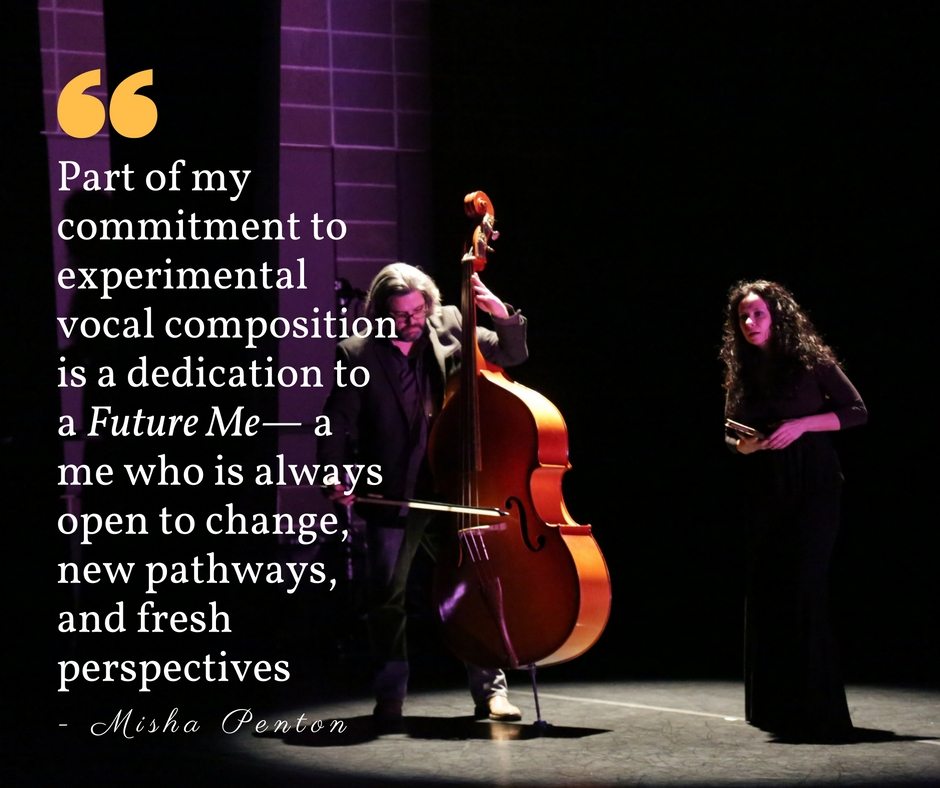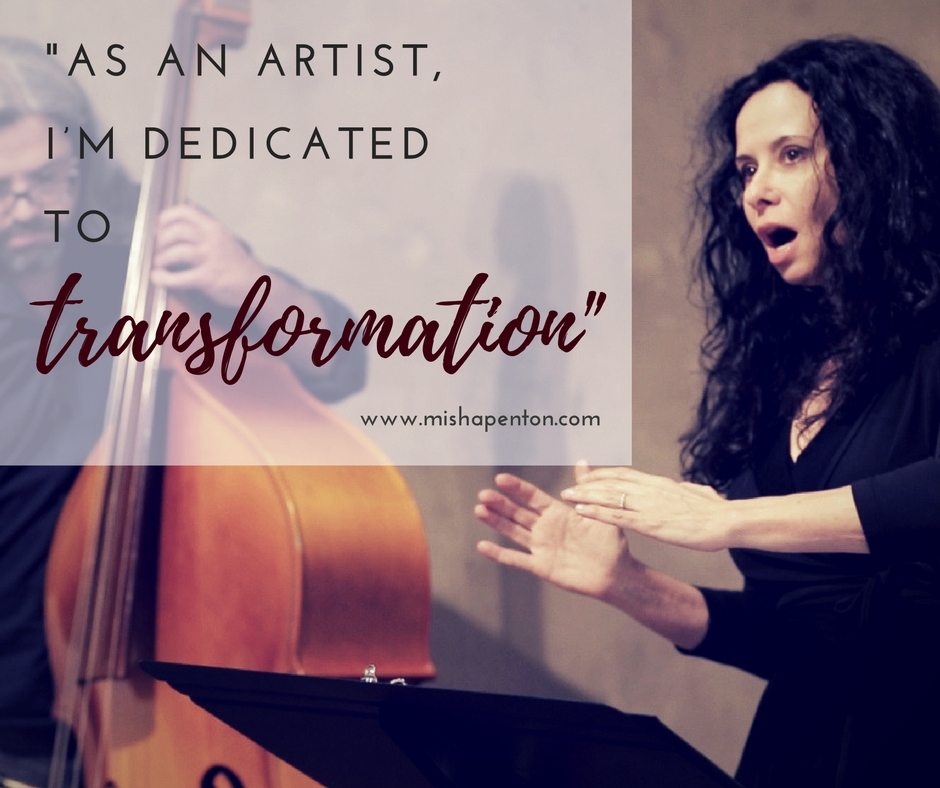Media projects are an evolving progression of my creative practice. As any performing artist knows, documentation of live work is an absolute must. Over time, I became somewhat obsessed with documenting my live work, and this obsession led me to produce new music videos and short form media operas. Although voice via music is my primary practice, I’m an inter- and multidisciplinary artist and director, so working across disciplines and with moving images feels very natural to me.
A little background: I’m a classically trained singer and I’ve been spearheading new music projects for a number of years, including historical adaptations, new chamber opera monodramas, and media projects. I’ve worked extensively with composers as librettist, conceptualist, director, producer and singer. Currently, I’m stepping into more experimental vocal realms and working even more with media.
I’ve been involved with recording in one way or another for quite some time. When I became more interested in photography and film, and learned to use a “real” camera, I wanted that visual practice to be part of my work. As performer, director, and producer, I have four new music video projects in my portfolio and more in the chute. I’m more interested than ever in working with the camera myself, creating experimental visual work, and continuing to expand my experimental vocal compositions.
Besides a love of the medium, I’m drawn to this kind of work because I grew weary of “one-off,” live, large-scale performances projects. I love live performance and its unpredictable ephemerality, but there are drawbacks, especially when creating new works. My live performance projects are enormously time-consuming, gobble resources like candy, and usually enjoy only a few performances— albeit, I’ve had the fortune of sharing my performance works in fantastic and engaging venues like the Museum of Fine Arts Houston, the Dallas Museum of Art, the Menil Collection Houston, and the Rothko Chapel. As much as I love live performance, I’m drawn to archival work and its ability to exist far beyond a live event.
For the Selkie music video I chose the coast of Oregon for the on-location shoot. I knew I wanted scenes of the tumultuous and desolate stormy ocean. It didn’t occur to me that filming on the beach in winter, in the Pacific Northwest, for my first video, might not be such a good idea. The Fool of the Tarot is a wonder-maker and a great teacher!
The Fool of the Tarot is a wonder-maker and a great teacher!
My husband is a stellar photographer and a close pal of his, who happens to live across the street from us in Houston, is a pro cinematographer. They were both game to adventure with me and to help bring my vision to life.
I knew I needed a wetsuit for the 45-degree water of the wintry Pacific. Houston is a bustling port city where everything, and I mean everything, is readily available. I ventured out to one of several professional diving shops on Richmond Avenue.
I wanted to capture footage of me wading in, or being submerged and emerging from, the ocean’s surf. I managed the wading bit, but it quickly became apparent that being submerged was out! I wore my wetsuit under my long red taffeta Victorian coat, and most surprisingly, the winter Pacific Ocean felt warm. The wading scene closes the film and is a nod to Virginia Woolf, a literary hero of mine, whose text is featured in my next music video release, This is our universe.
Selkie was my first music video in a set of three. It’s a musical setting of my libretto by composer Elliot Cole. The other two video works, ravens & radishes and The Captured Goddess, feature music by composers George Heathco and Dominick DiOrio, respectively. ravens is a setting of my fairytale poetry, and Goddess is a work written for me by Dominick: a fierce setting of the poetry of early 20th century imagist, Amy Lowell. My fourth video, This is our universe,an experimental opera based on a Woolf text, is scheduled for online release on November 16.
My work is in a constant state of flux and that’s how I like it. I’m working on a new experimental vocal work, (Proto)Medusa— an iterative performance and media piece based on reimagining and redefining the Greco-Roman Gorgon, featuring live voice, video, audio, and guest improvising instrumentalists.
As an artist, I’m dedicated to transformation. That’s a challenge in a world that likes comfortable, predictable work— work which meets limiting expectations— but I’m ever-growing, metamorphosing, molting and expanding.
Part of my commitment to experimental vocal composition is a dedication to a Future Me— a me who is always open to change, new pathways, and fresh perspectives: “I am spacious, singing flesh, on which is grafted no one knows which I, more or less human, but alive because of transformation.”— Hélène Cixous, “The Laugh of Medusa.”
 Soprano Misha Penton is a new music vocal artist and performance creator. She composes experimental vocal pieces, sings lots of cool new music and new opera, and invents and performs new solo and collaborative works. Find out more by visiting: mishapenton.com.
Soprano Misha Penton is a new music vocal artist and performance creator. She composes experimental vocal pieces, sings lots of cool new music and new opera, and invents and performs new solo and collaborative works. Find out more by visiting: mishapenton.com.



